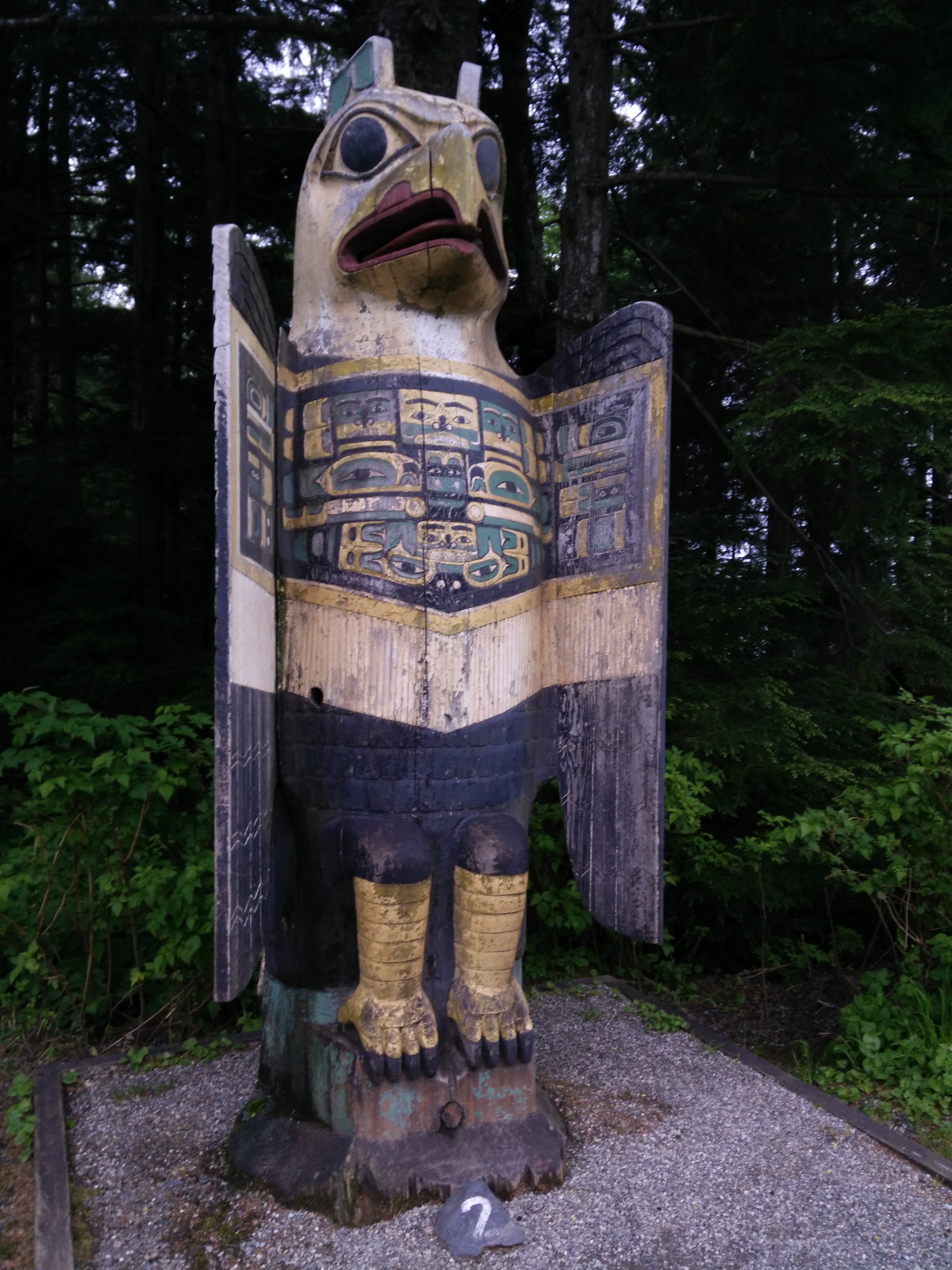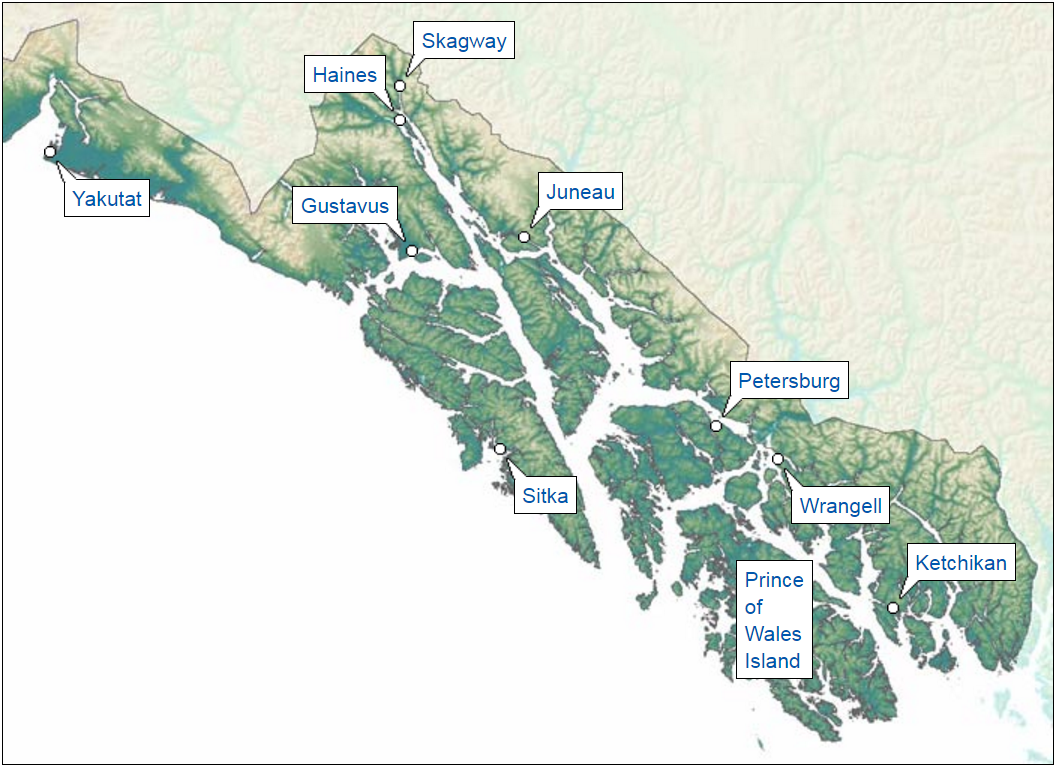Southeast Alaska Historical Events

An image of a Native Alaskan totem depicting a large Eagle. The top of the pole represents an Eagle head with large eyes and a hooked beak. the body is represented with outstretched wings. The bottom is carved into hooked talons. The totem is painted with black and yellow paint and has a colorful Eagle crest painted across the chest of the totem pole.
Native American Influence, Culture, and Value
Watch the following short video and be sure to watch for all references to Northwest Native Americans. We will focus on a specific region in the rest of this unit.
Be sure to come back to this resource after you are finished (you may need to close a tab or a browser window).
Past History can Guide our Future
Southeast Alaska is a small portion of the largest state in the United States of America. The land mass is over 35,138 square miles, includes seven boroughs. This land mass covers the area shown on the map below. To read more about Southeast Alaska review the information on Wikipedia.

The image is a green map of the southern part of Alaska. There are small signs indicating the names of larger communities from south to north, such as Ketchikan, Prince of Wales Island, Wrangell, Petersburg, Sitka, Juneau, Gstavus, Haines, Skagway and Yakutat.
Throughout this section of the state, there were many significant events that had an effect on US History. This lesson is meant to highlight just a few.
In addition, we'll explore the contributions of the local Alaska Native population. The Tlingit-Haida tribes are considered some of the richest cultures in the northern hemisphere.
Southeast Alaskan Natives
The Raven Dance: This video, adapted from material provided by the ECHO partners, presents a telling of the Tlingit myth, "How Raven Gave Light to the World." The story is told by Shirley Kendall (Eagle Moiety), originally from the Alaskan village of Hoonah. It is illustrated with video of Native dancers and Alaskan scenery, as well as with images depicting Raven. (Source: PBS Learning Media)